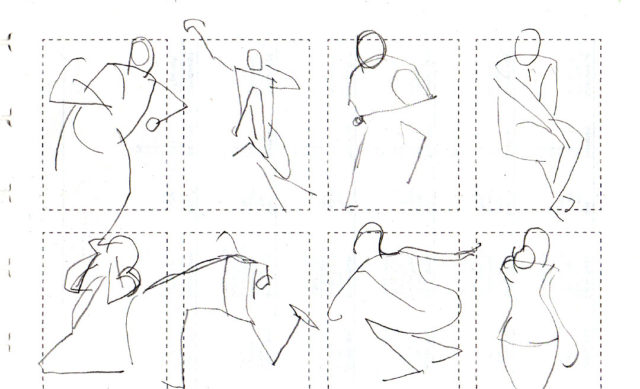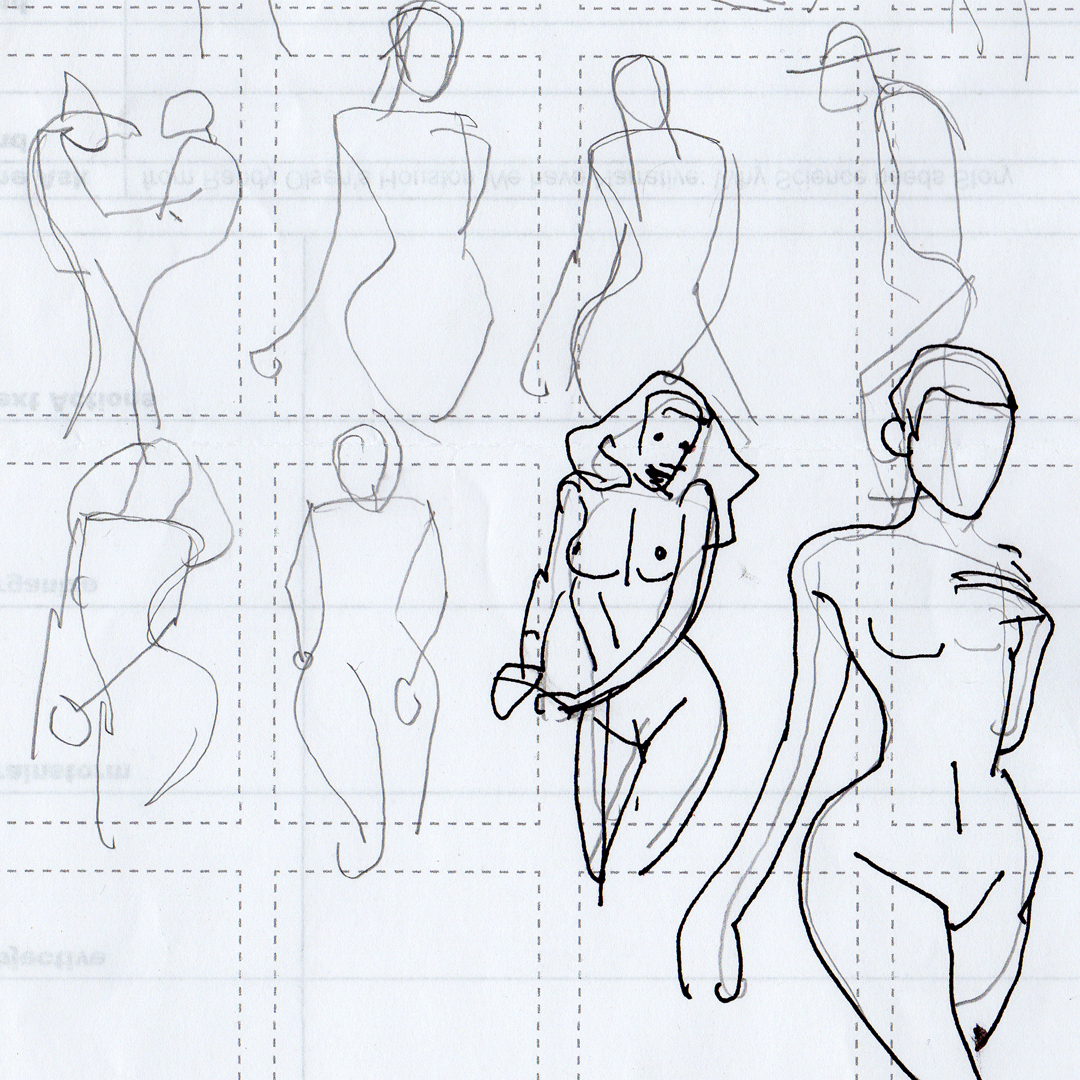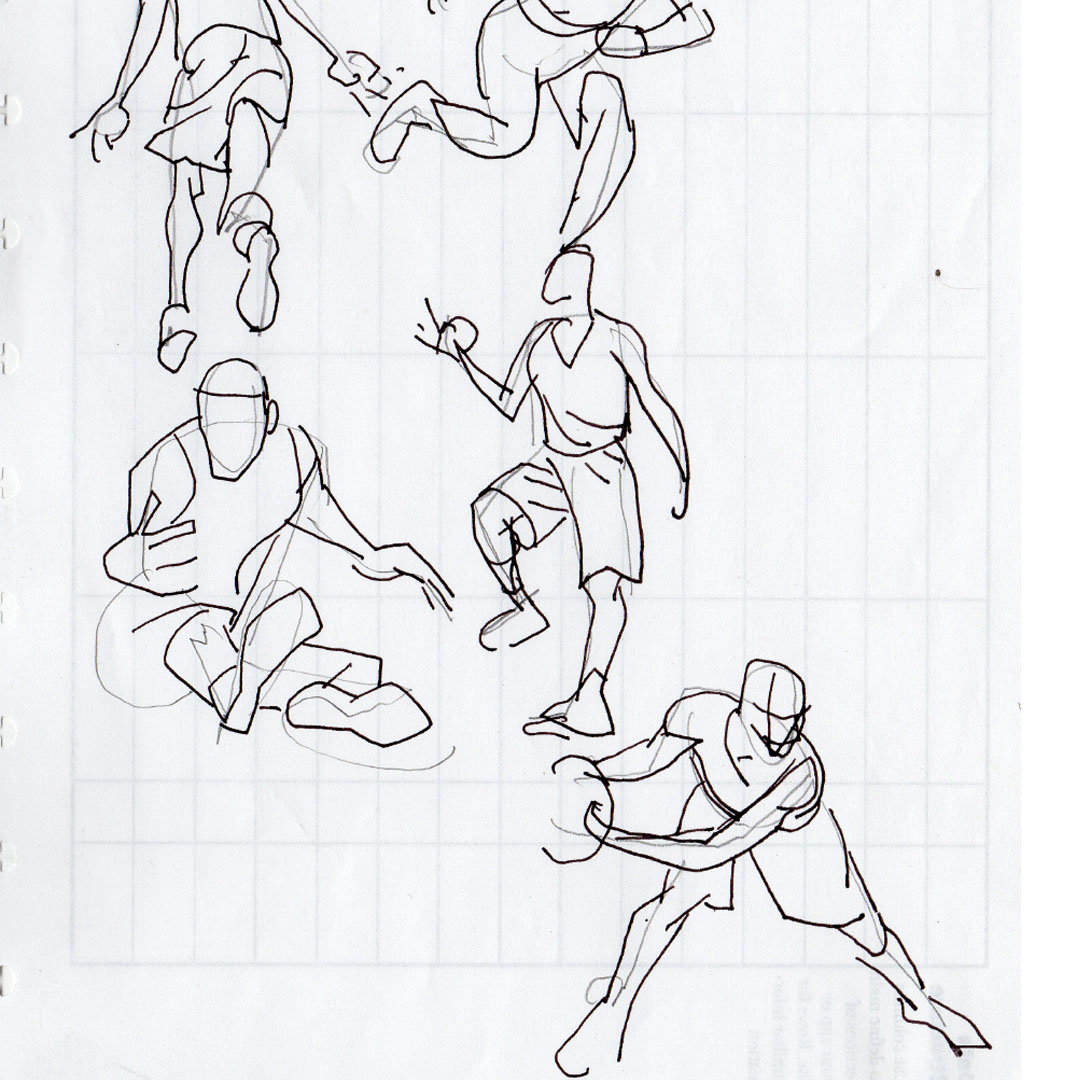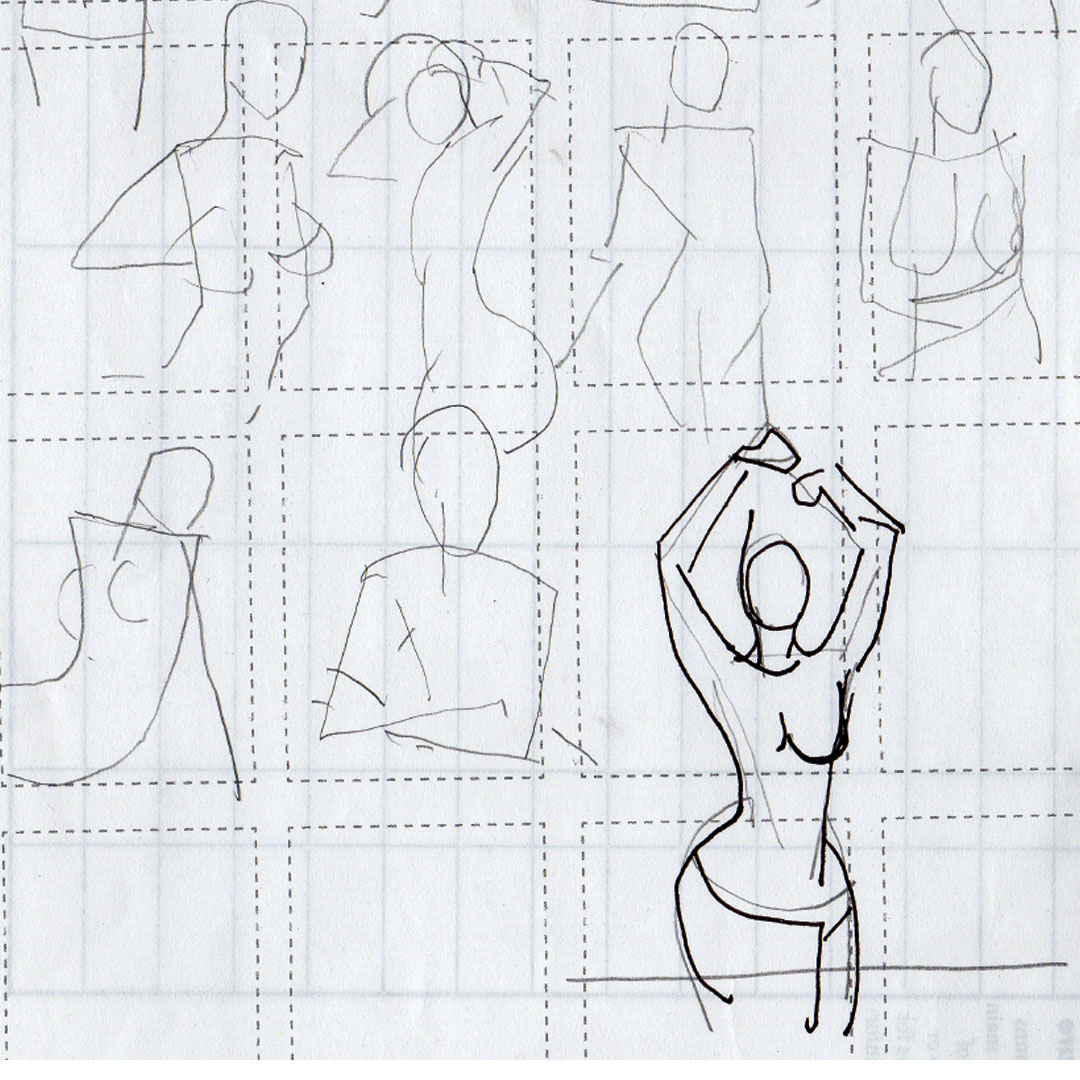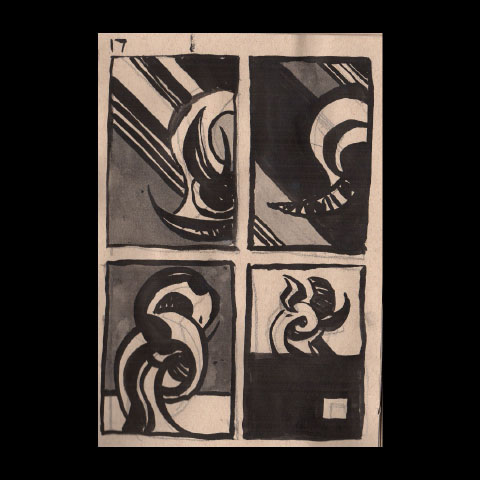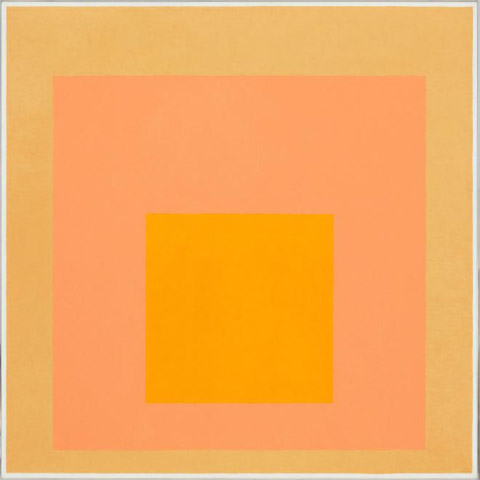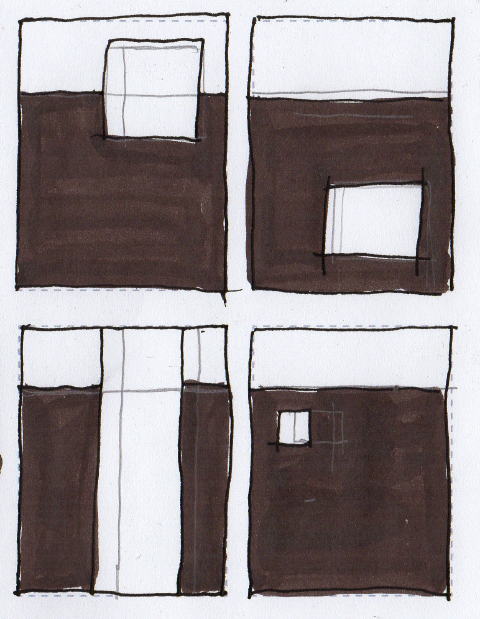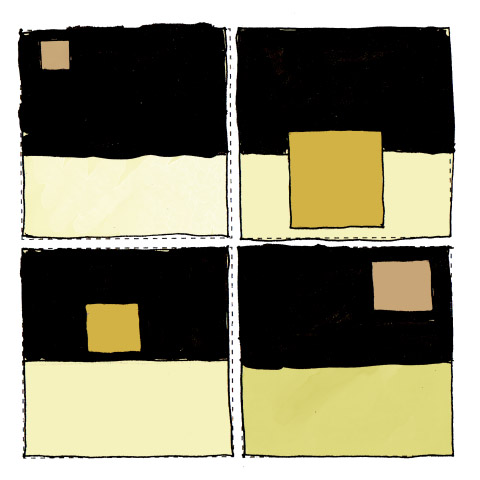
In teaching figure drawing you want students to understand how to construct a figure.
But in writing assignments for myself I’m exploring how to work the basics and push myself a step forward by defining a task.
2 minute gesture drawings always provide a quick satisfying buzz to do.
They are often just a quick exercise in focus to catch the whole figure, a motion and with the lack of time to see details always present an exciting moment of simplification.
A simple stick figure provides a skeleton for basic figure construction.
A simple stick figure drawing goal is not a final result, but a step to define how the figure translates from three-d space to the flat design on the page.
Translating our real world into flat shapes is the most basic act of drawing.
In my drawing, which is about flat shapes in relationship to each other, what shapes represent, how they define space and move the eye across the page I never really bothered with that “skeleton”.
Most drawing was just based on instinct.
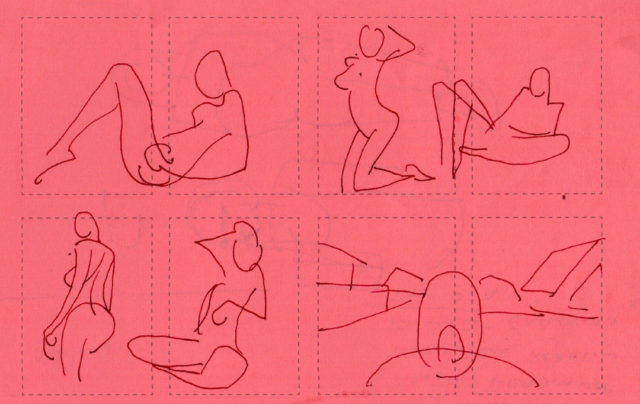
But cartooning is about building shapes into repeatable silhouettes for a character.
I want to use my life drawing as a foundation for this process of building characters, repeatable shapes for abstraction, and develop my comics drawing.
To build this foundation I”ve started doing a set of 30 second drawings from photos.
The perception of three-d space is removed by the camera, but as a warm-up it’s a quick way to practice with figures.
Quickposes takes a folder of images and loop thru them at customizable intervals.
Using Quickposes for a twenty minute session is the closest experience to life drawing when working from photos I’ve found.
The timed appearance of images gives it some of the feel of a session in a class.
There’s two exercises I’m starting with the first is a measured stick figure drawing.
Goal:
To define a skeleton in 2-d space that provides the illusion or guide to how it would be structured in 3-d space.
Length and angle of a line will define foreshortening, and gesture.
Steps
- Take Two long breaths to just look.
- Define the line across from shoulder to shoulder joint, this with a line between hip joints defines the torso’s movement.
- Do the sides of the torso
- Draw an outside line for the arm, check angles and placement of elbow and wrist in relation to the torso.
- Add the second arm, looking for where the elbow and wrist are placed in relation to the torso as defining the gesture.
- Make sure you have the hips measured out and define the second leg, drawing a line to the knee and then ankle.
- Treat the head as a line from shoulder that loops to define the block of it.
Evaluation
- Do the lines define hips and shoulders?
- Do the joints measure against each other?
- Is there a more effective way to place the figure on the page?
Goal:
To build a “designed” drawing that works as 2-d design as well as the illusion of a 3-d figure.
Steps
- In the first 30 seconds do a measured stick figure.
- Draw the longest visual line to emphasize the gesture.
- Define the torso in relation to the longest line.
- Look to repetition or contrast in the shapes that you are drawing.
- If drawing with a brush make sure you can clearly define a brush pattern for gesture drawing to work with on the figure(next post)
Evaluation
- Is there a clear silhouette?
- Does the figue work as an individual design?
- Does it have a leading motion or direction to focus the eye?
- Do I have repeatable shapes?
So now I’m going to spend a week doing 1 minute stick figures with a pen, see what it changes in the way I think about drawing.
The Weeks Warm Up Exercise
Goal
To track what happens when you ae mindful and focused on specific tasks
Steps
- Work from 1 folder of 20 images for 2–3 days.
- Measured stick figures for 14 figures
- Designed stick figures for 10 figure
- Write Evaluation Notes for 5 minutes to track thoughts about drawing
